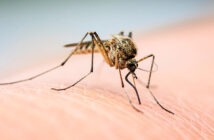At a recent seminar in London, the theory of bed bug corridors of infestation was proposed based on data collected from the pest control units of the London Councils. Immediate action was requested to prevent the situation returning to the epidemic levels experienced of the 1930s.
At the seminar held on 15 December in Central London and organised by Bed Bugs Ltd, the bed bug infestation data acquired by the company from the London Borough pest control units under the Freedom of Information Act was presented and discussed. Out of a total of 32 Councils, 20 supplied data, several did not record it in the appropriate form and the balance did not reply. Yet one major problem when analysing the data was the variation in what was recorded and saved, often in non-complementary ways.
| Even so, once plotted the data revealed clearly identifiable ‘hot spots’ and also ribbons of heavy and rapidly increasing infestations which Bed Bugs managing director, David Cain, has christened ‘corridors of infestation’. When examined, these corridors, claims David, appear to follow transportation links, for example bus and train routes from Gatwick airport.
When it comes to treating bed bug infestations, David Cain stressed that the pest controller needs to think more like a forensic scientist so as to get to the root of the problem. He said: “Bed bug control requires extremely high specification work and co-operation between all parties.” He called for bed bugs to be awarded notifiable pest status – only in this way will infestations be accurately monitored and analysed. |
|
|
|
He also pleaded for improved detection of infestations with the use of monitors. He hinted that such a device was in the final stages of development by his own company. An extended review of this seminar will appear in the January edition of Pest magazine. |
||




